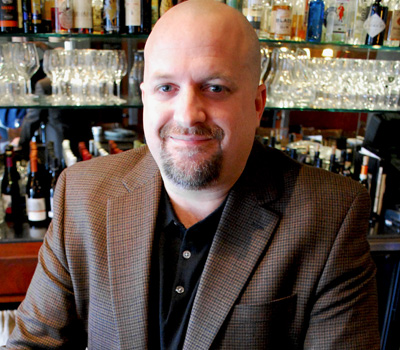Jeff Berlin has been in charge of the wine at Oakland’s À Côté ever since it opened 15 years ago. Early on, he realized that by pushing the envelope into unfamiliar regions and varieties, he could entice Oakland’s most adventurous wine drinkers to come back again and again for a taste of the brave new world of things like Hungarian kadarka, Swiss cornalin, dry Tokaji and even Georgian amber wines.


Rising Prices, Rising Sales
The increase in labor cost—the new minimum wage—higher insurance costs, and all that stuff is really the reason we’ve had to raise prices. Average by-the-glass prices have gone up, because I don’t want to have to dive too far down on the quality side and have $8 glasses that don’t taste good.
Still, we had a banner year, this year being our 15th anniversary. It was one of our busiest. We finished out with our most successful New Year’s Eve ever in terms of sales.
We have always done really well with tasting flights, and that’s allowed us to have more expensive wines open by the glass. And this year our flight sales have actually surpassed our regular by-the-glass sales. When I’m able to put some of the higher-end stuff on by the glass, it really draws people in.
The New Spain
Spain has been big for us this year. I’ve always felt that Spain was a juggernaut in general. So much wine comes out of Spain, and it’s very market-driven and trend-oriented. Some years it’s been hard to find new good quality wine. But this past year I’ve seen an explosion of smaller artisanal farmer wines. One of the wines I listed as one of my top-sellers was the 2012 La Zorra Salamanca Rufete. Man, that was a great find. They specialize in a grape called rufete, found in the mountains west of Madrid near the border of Portugal. There’s a red and a white version; the red was a big seller—it spent a bit of time in new French wood but was not by any means over-oaked. The white is a blend of rufete and palomino, and spent five months under flor in neutral wood. It had some of the aromatics of Sherry, but just subtle and earthy and balanced. It was a winner.
Also, a new kid named Alvaro de la Viña from New York, who is Spanish, started his own small import company called Selections de la Viña, and toward the end of year he brought me a whole portfolio of small-producer, unique Spanish wines. I think he’s going to do well here because all the wines he brought me were stellar. He brought me eight wines or something and I bought all eight.
On Georgia with age: the 2009 Dergi Kakheti Valley Saperavi
The big thing to celebrate for me was that there was a Georgian wine that hit my top ten this year. It had a few extra years on it, so it kind of allowed those tannins to quiet down a little bit and be more approachable to an average American drinker. Even in Georgia, I haven’t really had an opportunity to drink a lot of slightly older vintages. It was eye-opening. A very big victory. I have huge hopes for Georgian wines in the next few years as we find bottlings that have more age on them.
A hard sell
The thing that I can’t sell is often riesling. It’s never made up a huge percentage of our sales. Tasting flights are the best way to do it, but still, even today, even at a place like this, people still have a huge reluctance to drink something they think will be sweet.
Longtime senior editor at Wine & Spirits magazine, Luke now works for the Stanford Technology Ventures Program.
















